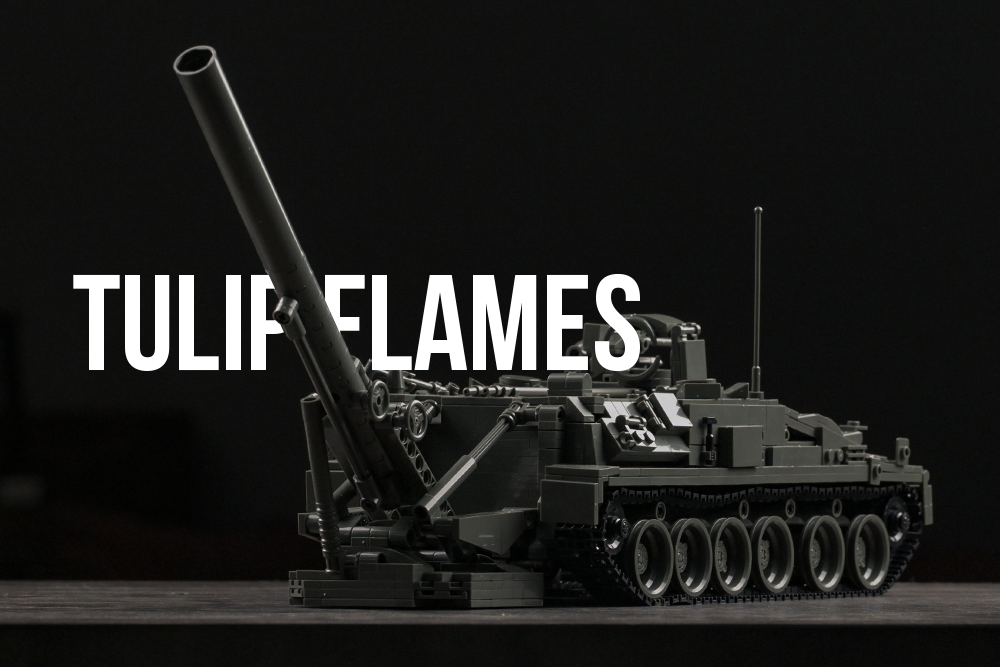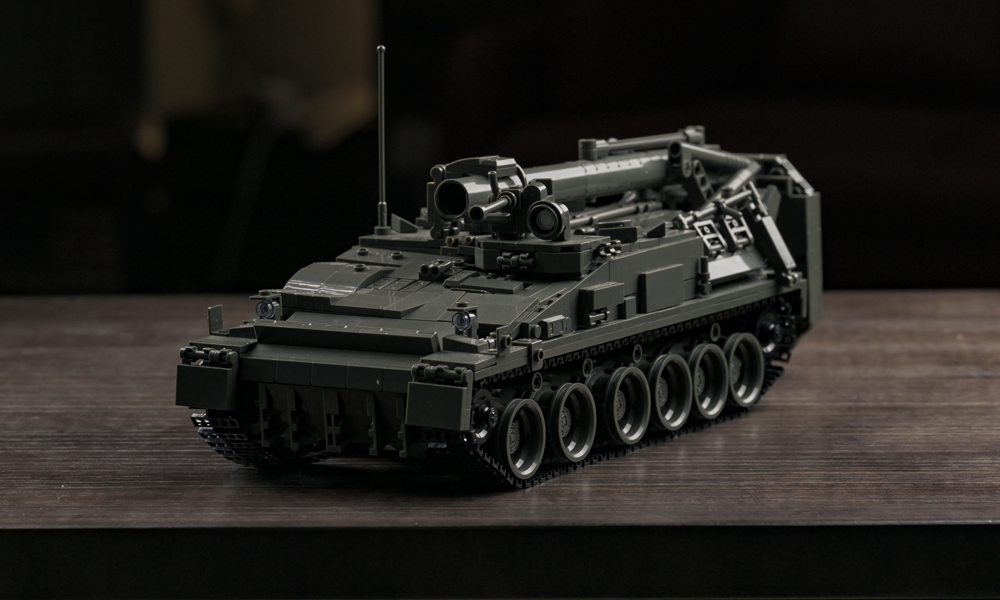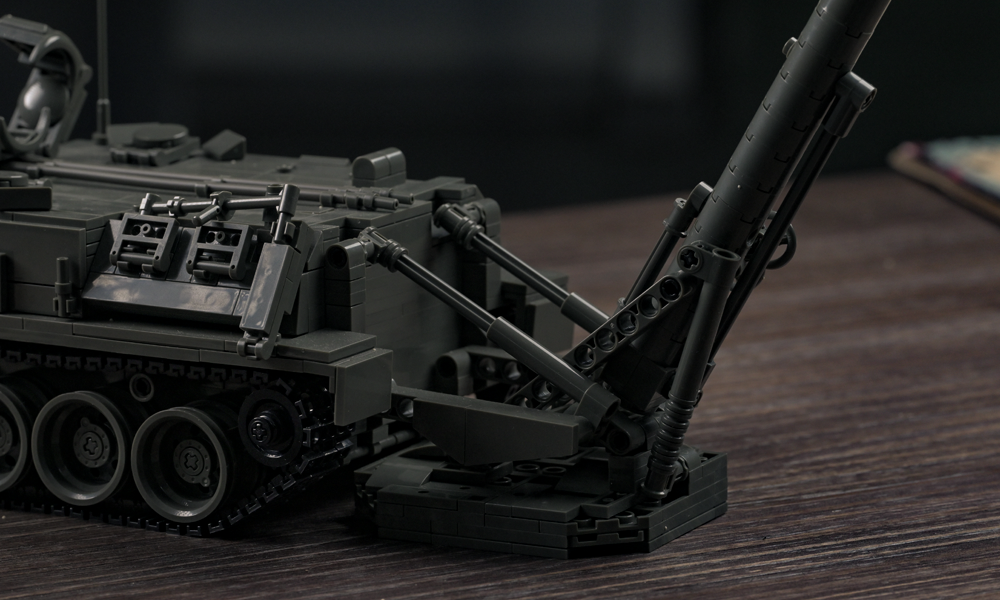BEHIND THE SCENES – Tulip Flames: The 2S4 Tyulpan – A Tribute to Cold War Engineering


In the shadowed corridors of Cold War history, the 2S4 Tyulpan stands as a paradox—a weapon of brutal efficiency wrapped in the poetic nickname “Tulip.” Designed in the 1970s as a response to NATO’s fortified bunkers, this self-propelled mortar was engineered to obliterate hardened targets with 240mm shells capable of piercing 12 meters of concrete. Unlike its contemporaries, the Tyulpan didn’t just bombard; it excavated. Nicknamed the “Bunker Buster” by Soviet troops, it became the scalpel in the USSR’s arsenal, carving through obstacles that lesser weapons merely scratched.
For military enthusiasts, the Tyulpan represents a watershed moment in artillery design. Its hybrid chassis—a marriage of a GMZ mine-laying vehicle and a turret housing the colossal mortar—allowed it to fire, reposition, and vanish before counter-battery radars could lock on. “It wasn’t just a weapon,” says Yestin Fun, NifeliZ’s lead designer. “It was a chess piece in the Cold War’s deadliest game.”

Yestin Fun’s obsession began with a single photograph: a Tyulpan poised in the Afghan mountains, its barrel angled like a violinist’s bow. “I wanted to capture that tension between elegance and destruction,” he recalls. But translating a 27-ton behemoth into a building brick set demanded more than reverence—it required engineering alchemy.
The Tyulpan’s 20-foot barrel could elevate to 80 degrees, a feat Yestin replicated using a dual-axis hinge system. “We tested 14 prototypes,” he admits. “Traditional LEGO hinges sagged under the weight, so we combined Technic liftarms with custom brackets. Now, when you adjust the barrel, it clicks into place like the original’s hydraulic locks.”
The mortar’s baseplate—a 1.5-ton steel disc—had to absorb recoil without toppling the model. Yestin’s solution? A collapsible brick lattice inspired by origami. “It unfolds like a flower,” he says, “but locks rigid under tension. Builders will feel that ‘snap’ of stability—the same sensation crews felt when deploying the real Tyulpan.”

Open the NifeliZ Tyulpan’s hull, and you’ll find secrets even historians might miss:
The Ammo Bay’s “Easter Egg”: Slide out the brick-built 3OF-3 shells, and you’ll find tiny Cyrillic markings—a nod to factory stamps on original munitions.
The Cockpit’s Cold War Quirks: The driver’s periscope uses a transparent orange brick to mimic Soviet anti-laser filters. “It’s pointless in a model,” Yestin laughs, “but it’s those details that whisper, ‘This was built by humans, not machines.’”
For Yestin, the Tyulpan’s legacy isn’t measured in rubble but in risks taken. “The Soviets could’ve built another tank,” he notes. “Instead, they created this thing—a mortar that thinks it’s a missile. That’s the spirit we channeled.”
The set’s pièce de résistance? A functional gear-shifting mechanism mimicking the Tyulpan’s 5-speed transmission. Rotate the brick-built lever, and you’ll feel the same resistance Soviet drivers faced navigating Kabul’s ravines. “It’s not about playability,” Yestin insists. “It’s about empathy. When your fingers fumble those gears, you’re touching history.”
As Yestin finalizes plans for a companion model—the Tyulpan’s rarely-seen ammunition carrier—he reflects on the project’s irony. “The real Tyulpan was designed to erase things. We’re using bricks to make sure it’s never forgotten.”
To build this set is to resurrect a machine that straddled madness and genius. Each click of a brick echoes the Cold War’s relentless innovation—a reminder that even in destruction, there’s art.
kidzooon at 9:37 pm, April 7, 2025 -
Your blog has quickly become one of my favorites I always look forward to your new posts and the insights they offer
尼费利兹_adm at 9:04 pm, April 8, 2025 -
Wow, thank you so much! 😊 That really means a lot to hear. I’m so glad you’re enjoying the posts and finding value in them. I’ll definitely keep the insights coming!
kidzooon website at 8:24 pm, April 8, 2025 -
I love how this blog promotes a healthy and balanced lifestyle It’s a great reminder to take care of our bodies and minds
Rodolfo Berry at 3:33 am, April 10, 2025 -
It’s always a joy to stumble upon content that genuinely makes an impact and leaves you feeling inspired. Keep up the great work!
尼费利兹_adm at 9:02 pm, April 10, 2025 -
Thank you so much for your kind words! It truly means a lot to hear that the content resonates and inspires. We’ll keep doing our best to bring more meaningful and enjoyable updates your way. Appreciate you being here! 😊
Wayne Jacobson at 5:10 pm, April 10, 2025 -
Wow, I had never thought about it in that way before You have really opened my eyes to a new perspective Keep up the great work!
尼费利兹_adm at 9:02 pm, April 10, 2025 -
I’m so glad to hear that! It’s always awesome when a new perspective clicks. Thanks for sharing your thoughts, and I’ll keep doing my best to bring fresh insights your way. Appreciate your support! 😊
hdvideoboks at 5:45 am, April 11, 2025 -
This is exactly what I needed to read today Your words have given me a new perspective and renewed hope Thank you
尼费利兹_adm at 9:52 pm, April 13, 2025 -
That truly means a lot—thank you for the kind words! I’m so glad it resonated with you and brought a little hope your way today.
mexicanpharm at 5:17 pm, April 11, 2025 -
Your writing is so engaging and easy to read It makes it a pleasure to visit your blog and learn from your insights and experiences
尼费利兹_adm at 9:53 pm, April 13, 2025 -
Thank you so much for the lovely compliment! I’m really glad you’re enjoying the blog and finding value in what’s shared. That kind of feedback is what keeps the passion alive.
icel haber at 4:55 am, April 12, 2025 -
Looking forward to your next post. Keep up the good work!
尼费利兹_adm at 9:53 pm, April 13, 2025 -
Thank you so much! That really means a lot. I’ll keep doing my best to bring you more content you’ll enjoy—stay tuned for what’s coming next! 😊📚✨
canakkale haber at 4:40 pm, April 12, 2025 -
I’ve come across many blogs, but this one truly stands out in terms of quality and authenticity Keep up the amazing work!
尼费利兹_adm at 9:54 pm, April 13, 2025 -
That’s such a kind and encouraging message—thank you! I’m truly grateful for your support and so glad the blog resonates with you. More meaningful content coming your way soon! 🙌😊
blog at 6:55 am, April 16, 2025 -
I appreciate how this blog addresses important issues in a respectful and informative manner It’s refreshing to see a blog use its platform for good
linking at 7:52 pm, April 16, 2025 -
Your writing is so eloquent and persuasive You have a talent for getting your message across and inspiring meaningful change
linking at 7:03 am, April 17, 2025 -
Leave a comment and let us know what your favorite blog post has been so far!